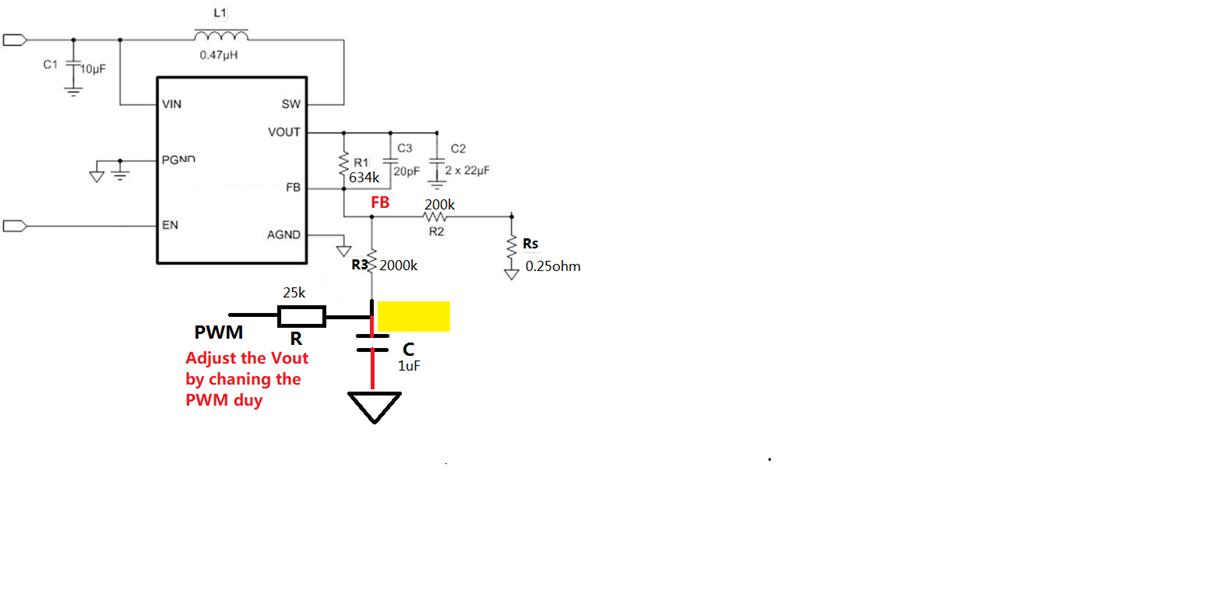Hello TI team,
my customer wants to use TPS55340 as adjustable output, i want to suggest the schematic showed the link below;
but i have some questions for this circuit.
1. what is the meaning of Rs(0.25ohm)?
2. I calculated Vout in this way, please check this is right or not.
(1) i inserted PWM as 10KHz, 3.0V / 0V as high and low voltage and duty cycle of 75%. then after RC filter(25K, 1uF) I can get 2.25V
(2) as resistor divider, i get FB voltage as 2.045V (ignoring Rs, 0.25ohm)
(3) final Vout is, Vfb*((R1/R2)+1) = 2.045*((634/200)+1) = 8.528V
actually i am not sure what is the exact value of R2 in the schematic above.
please give me some advice to configure the final value, especially Rs and R2. Thanks.
Best regards,
Chase



